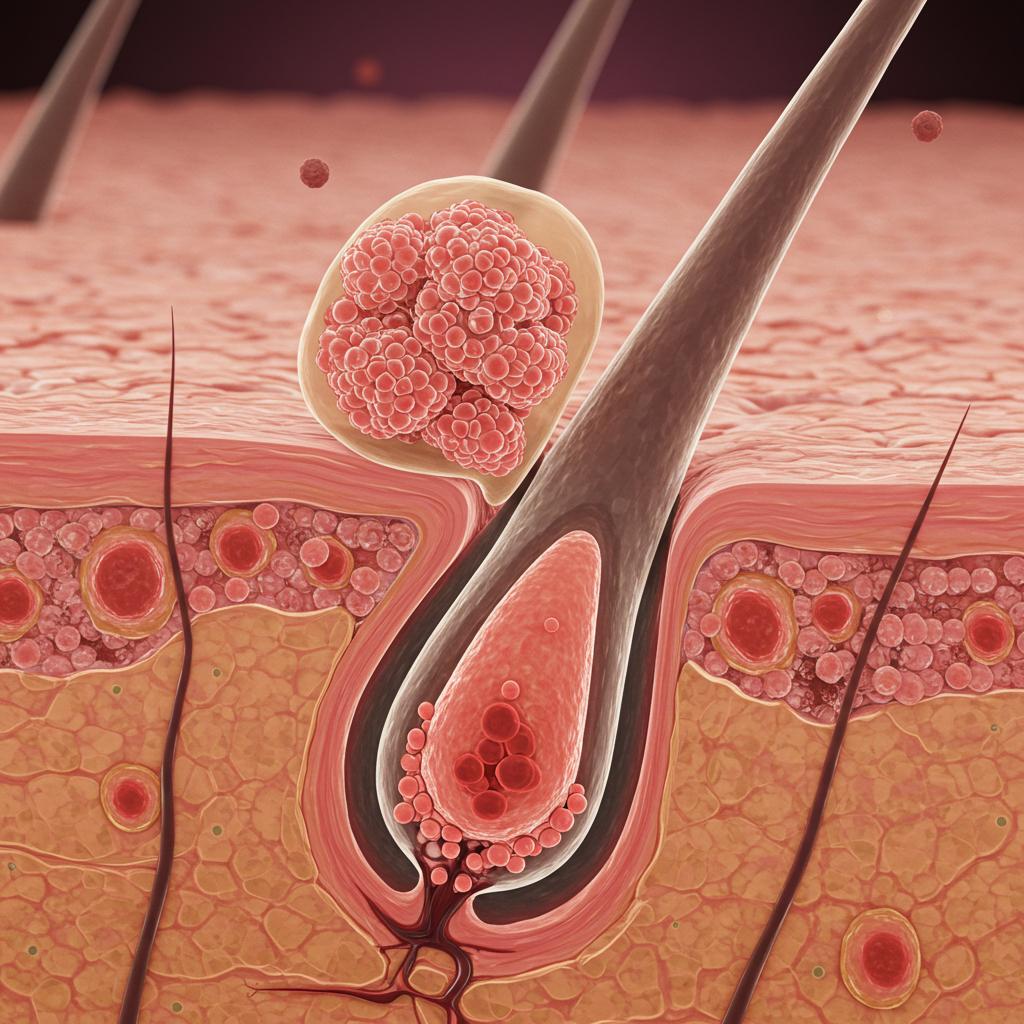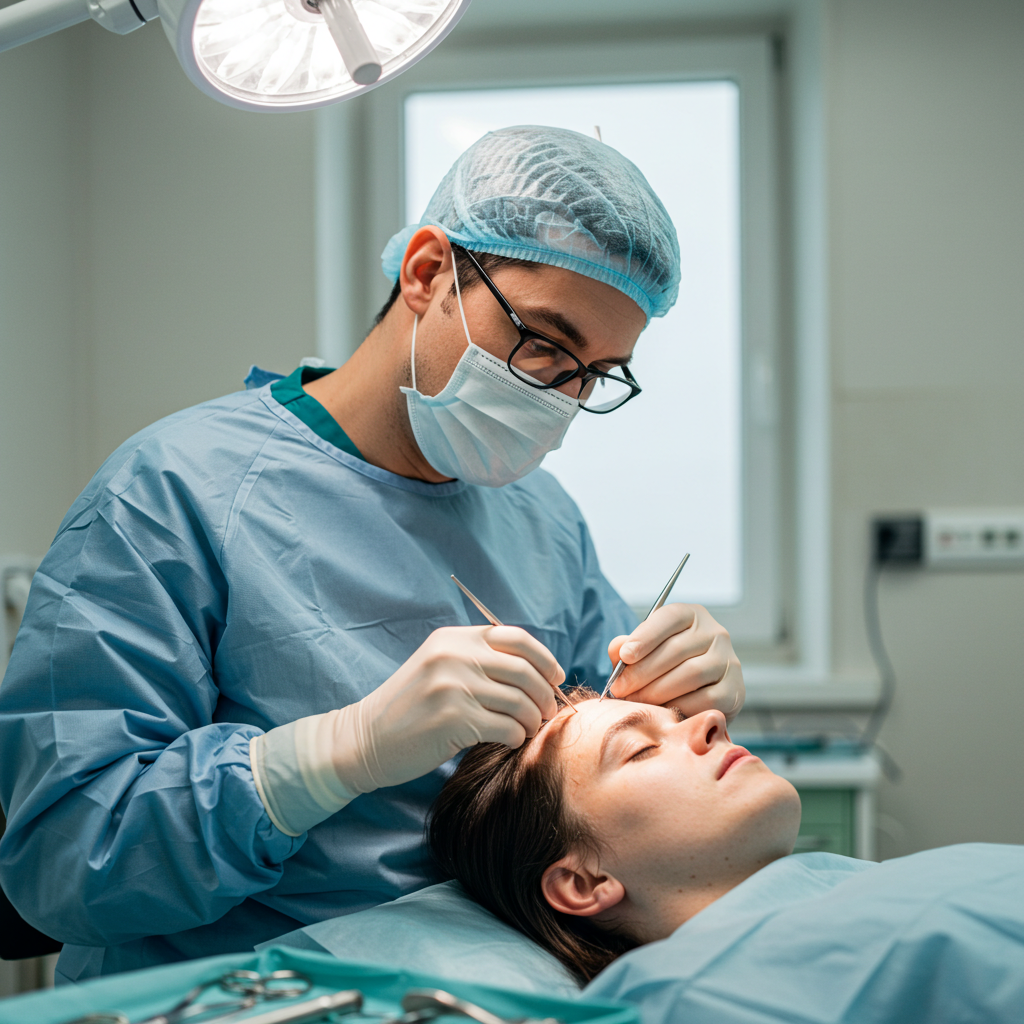This revolutionary approach moves beyond simply moving hair from one part of the scalp to another. Instead, it leverages the power of regenerative medicine and tissue engineering to create new hair follicles from scratch. By harnessing a patient’s own cells, scientists are learning to cultivate hair in laboratory conditions, offering the promise of an unlimited, natural, and permanent solution to androgenetic alopecia and other forms of hair loss. The implications are staggering, not just for medical treatment, but for the vast and ever-expanding cosmetics and personal care markets.

From Follicle Extraction to Follicle Creation: The Science Unveiled
The current gold standard for hair restoration, Follicular Unit Extraction (FUE), is essentially a redistribution game. It takes hair from the donor-rich areas at the back of the head and implants it into thinning or bald areas. Its major limitation is the finite donor supply; you can only move what you already have. Hair follicle farming, or hair cloning, seeks to solve this fundamental problem.
The process typically begins with a small biopsy from the patient’s scalp, from which scientists extract two key types of cells: dermal papilla cells and epidermal stem cells. The dermal papilla cells are the command center of the hair follicle, responsible for instructing the growth of the hair shaft. Researchers have discovered that by isolating and multiplying these cells in a specialized 3D culture environment, they can be coaxed into forming new, functional follicle primordia—the early developmental stage of a hair follicle.
These newly bioengineered follicles are then meticulously implanted into the recipient’s scalp. Once implanted, they establish their own blood supply and begin cycling through natural growth (anagen), regression (catagen), and resting (telogen) phases, just like the hair a person was born with. The result is not a transplant, but a true generation of new, permanent hair.

The Market Forces Driving a Billion-Dollar Boom
The potential value of this technology is not based on mere speculation; it is grounded in powerful, undeniable market forces. The global hair loss treatment market was valued at over $5 billion in 2023 and is projected to grow steadily. However, this figure represents a market largely unsatisfied with its current options.
The target audience is massive and diverse. It includes:
Men and Women with Pattern Baldness: The primary demographic, spanning all age groups and ethnicities, who have exhausted other options or seek a more permanent solution.
Cancer Survivors: Individuals who have lost hair due to chemotherapy and seek to restore their natural growth rather than rely on wigs.
Victims of Burn Injuries or Scarring Alopecia: For those with damaged scalp tissue where traditional transplants are impossible, follicle farming could offer a path to restoration.
The Aesthetics and Cosmetics Industry: This is a wildcard with enormous potential. Beyond treating hair loss, the technology could be used for non-medical hair enhancement, density procedures, or even creating specific hair textures and colors bio-engineered to a client’s desire.
The addressable market is virtually every individual experiencing hair loss who has the means to pursue treatment—a group numbering in the hundreds of millions worldwide.

Overcoming the Scalp-Hurdles: Challenges on the Path to Commercialization
While the promise is extraordinary, the path to a commercially available, FDA-approved treatment is fraught with scientific and regulatory challenges. The human hair follicle is an incredibly complex mini-organ, and replicating its natural development outside the body is no small feat.
One of the biggest hurdles has been maintaining the “inductive capacity” of the dermal papilla cells. In the body, these cells naturally send signals to create new hair. However, when grown in a traditional 2D lab culture, they quickly lose this ability, becoming just ordinary skin cells. The breakthrough has been in developing 3D spheroid cultures and using specific growth scaffolds that allow these cells to maintain their hair-growing instructions.
Another challenge is ensuring the new follicles cycle correctly and produce hair that matches the patient’s natural color, texture, and growth angle. A head of hair that grows in random directions or falls out in unsynchronized clumps would be an unacceptable outcome. Finally, the entire process, from cell extraction to implantation, must be scaled efficiently to be cost-effective and meet global demand, all while navigating the rigorous and lengthy approval processes of health authorities like the FDA.

Key Players and Pioneers Cultivating the Future
The race to bring this technology to market is already underway, led by a mix of well-funded biotech startups and established industry giants. These players are investing millions in research and clinical trials, each with a slightly different approach to the core science.
Stemson Therapeutics is a prominent name, having raised significant capital to advance its proprietary protocol that uses induced pluripotent stem cells (iPSCs) to generate new hair follicles. Their approach aims for massive scalability.
dNovo is another key innovator, focusing on direct reprogramming to transform ordinary cells (like blood or fat cells) directly into hair-growing stem cells, bypassing some of the complexity of other methods.
Traditional Hair Transplant Giants: Established players in the current market are not sitting idle. Many are investing in or partnering with biotech firms to ensure they are not left behind when the paradigm shifts from transplantation to generation.
This competitive landscape is a strong indicator of the industry’s potential. Where venture capital and major corporations invest heavily, disruption often follows.

Beyond Vanity: The Broader Impact and Ethical Considerations
To dismiss hair follicle farming as a mere vanity project is to underestimate its profound impact. The psychological burden of hair loss is well-documented, linked to decreased self-esteem, social anxiety, and even depression. A truly effective cure could significantly improve the quality of life for a huge segment of the population.
Furthermore, the technological breakthroughs achieved in this niche will have ripple effects across all of regenerative medicine. The lessons learned in growing a complex mini-organ like a hair follicle provide a blueprint for engineering other tissues—from sweat glands to more complex organs. The bioreactors, scaffolding techniques, and cell culture protocols developed will accelerate progress in other fields.
Of course, such powerful technology also brings ethical questions. As with any cosmetic-enhancement technology, issues of accessibility and equity arise. Will this be a treatment only for the wealthy? There is also the potential for misuse; could the technology be used to create extreme or non-human hair modifications? These are important conversations that must evolve alongside the science itself.

The Future is Growing: What to Expect in the Coming Decade
So, when can we expect to walk into a clinic for a hair follicle farming procedure? While not available today, the timeline is measurable in years, not decades. The first wave will likely be limited clinical offerings for the most severe cases, such as burn victims, within the next 5-7 years. This will be followed by broader clinical trials for male and female pattern baldness.
Widespread commercial availability is probable within the next 10-15 years. Initially, the cost will be prohibitively high, placing it in the realm of high-end medical tourism. However, as with all technology, costs will plummet as processes are automated and scaled. What begins as a $50,000 procedure could, within a generation, become as accessible as a high-quality hair transplant is today.
The beauty industry will be revolutionized. We will move from painting on colors and gluing on extensions to potentially programming our hair’s fundamental properties. The line between treatment and enhancement will blur, creating a new, massive market for elective bio-aesthetics.
Hair follicle farming represents a perfect storm of scientific advancement, immense market demand, and significant financial investment. It addresses a deeply human concern with a solution that was once the stuff of dreams. It’s not just about growing hair; it’s about growing confidence, options, and an entirely new industry from the ground up. The seeds have been planted, and the harvest will be worth billions.



